The bobcat or red lynx (Lynx rufus) is North America’s most abundant and wide-ranging species of wild cat. It can be found from southern Canada through most of the United States and into Mexico. Although heavily persecuted it has been able to maintain its range and a generally high population. They live in every conceivable habitat, from woodlands and swamps to deserts and mountains and often close to human developments.

Although bobcat figures have been around since the 50’s and 60’s (Marx and Tim-Mee) the abundance of the cat itself is not well reflected by our hobby. Most of the major toy animal manufacturers are from Europe and Asia and they gravitate towards the Lynx species in their own regions. The exception is Safari Ltd., based in Florida, and they’ve done a lot to make sure North America’s wildlife is well represented in the toy market. In fact, their standard size bobcat is the single best figure of the species ever made. And it has held that title for the last 12 years. But having originally been released in 2011, does it hold up? Let’s take a closer look.

The Safari bobcat measures about 3” in length and stands 2” tall at the shoulder. The actual bobcat measures 28-47” (71-119 cm) long and stands 12-24” (30-60 cm) tall at the shoulder. Males average about 21 lbs. (9.5 kg) while females average 15 lbs. (6.8 kg). Exceptional specimens can reach 40 lbs. (18 kg). This puts the figure at 1/9-1/15 in scale. Although the bulk of their diet consists of lagomorphs and rodents, bobcats are generalists, and will feed on just about anything they can catch. Thanks to their larger size, male bobcats will even tackle deer, pronghorn, and bighorn sheep. And not just young or sickly animals but healthy adults as well, animals that weigh eight times more than the cat itself.
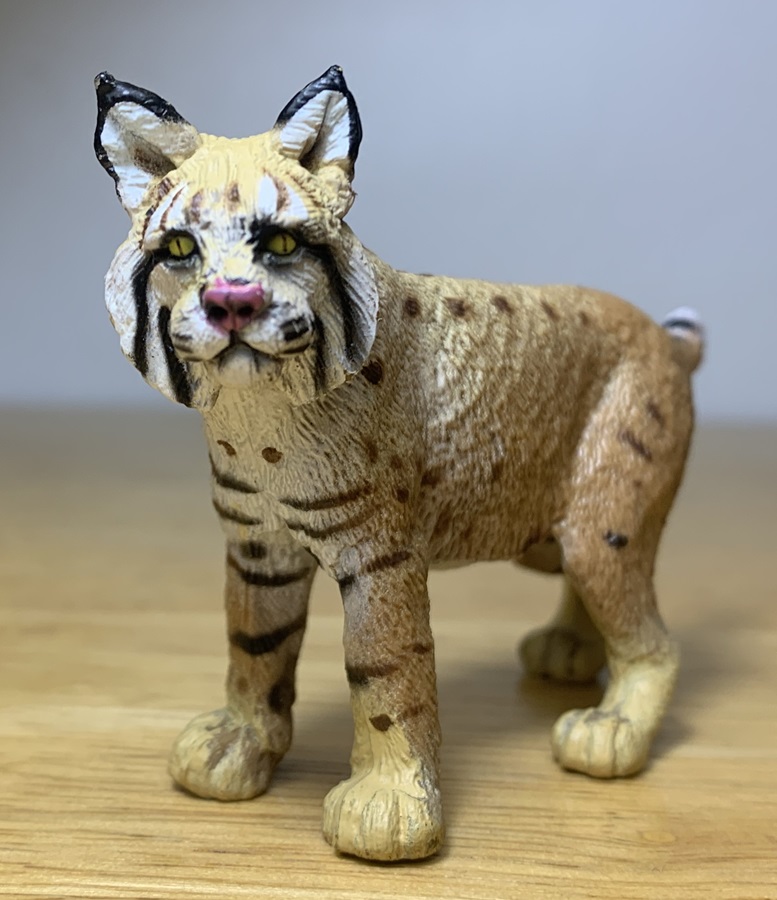
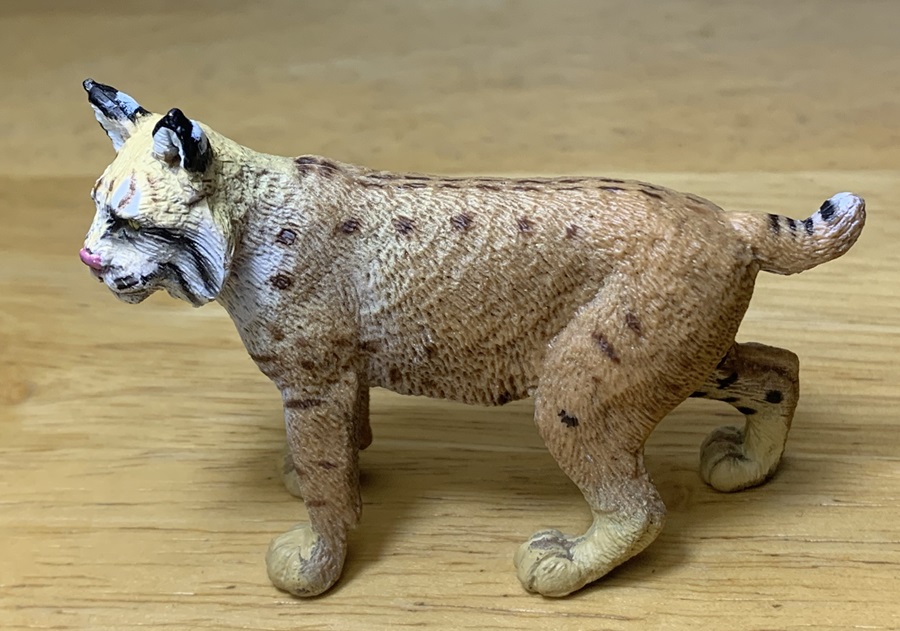
The Safari bobcat is presented in a static pose with the head looking gently leftward. All the hallmarks of the species are here. The pointed ears are tipped in black, and ruffs of fur are sculpted along the sides of the head. The paws are large and broad. And then there is the stubby tail, which gives the bobcat its name. It’s said that Lynx species have short tails because they’re adapted for hunting on the ground and don’t need long tails for the balance that other cats need. The short tails also make them less obvious to predators and prey alike. Fine details include a nicely etched coat of fur that follows the contours of the figure’s body and detailed foot pads. The body is decently sculpted with defined musculature in the legs.

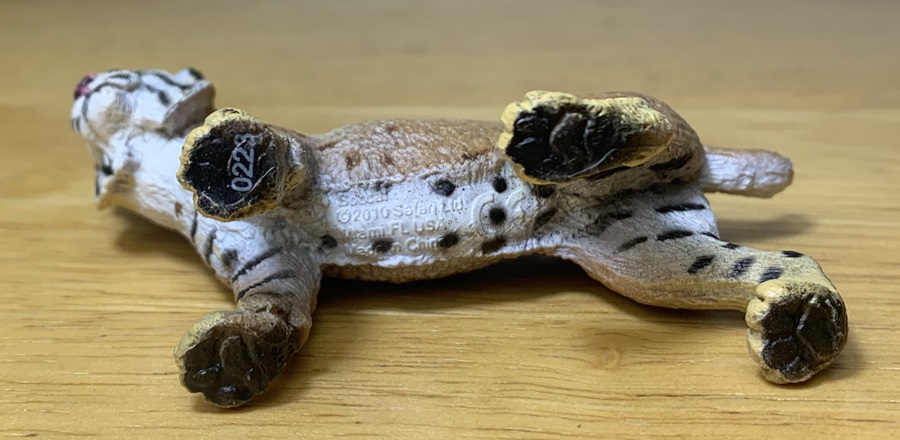
Bobcat coloration is extremely variable in nature but generally bobcats are tan, brown, or gray, with dark spots and streaks on the body and bands on the legs and tail. The Safari bobcat matches this description with a complex paintjob. The main body is darker than the head and neck and detailed with dark brown spots and streaks. The underside is white with black spots. The underside of the tail is accurately white, but I do wish a more prominent black tip was painted on the above surface of the tail.

The face is white with black and brown streaking and the whiskers are highlighted in black. The inside of the ears is white and there are white spots on the back of the ears. In life these eyespots are used to communicate with kittens following their mothers and may also deter predators from attacking from behind. There are also white markings above the eyes. The nose is pink, and the eyes are accurately yellow with black elliptical pupils.
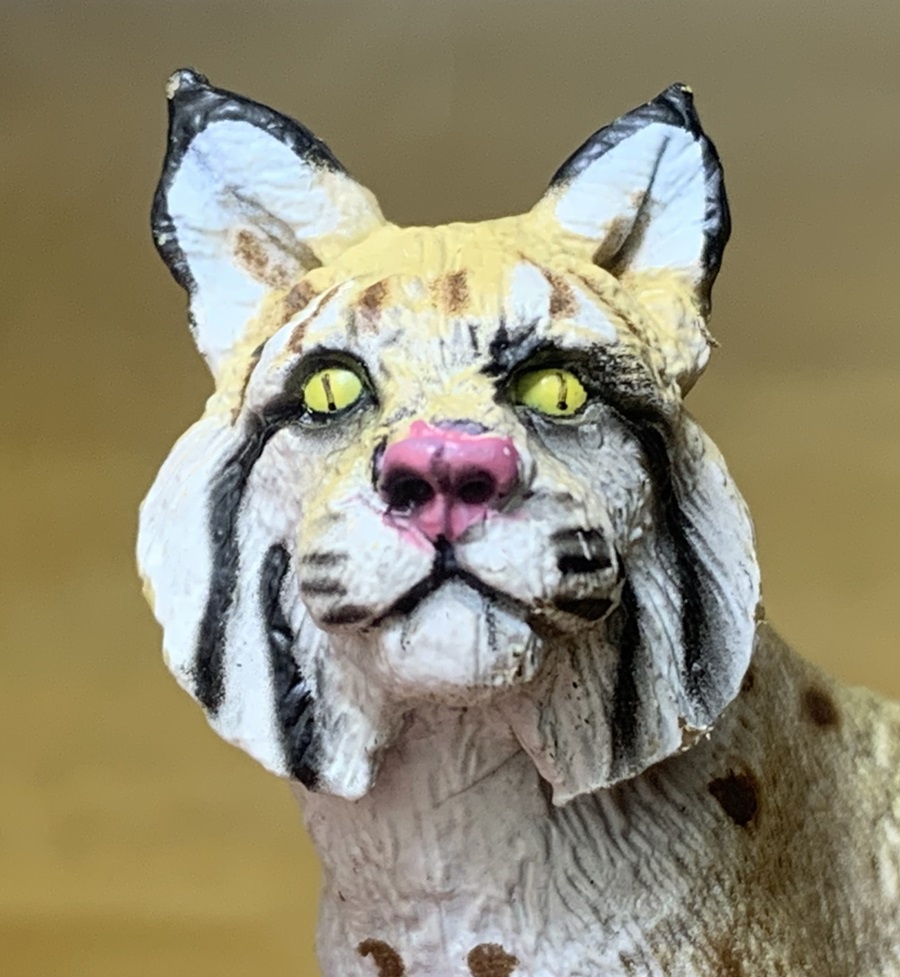
Overall, the figure holds up remarkably well, but the details of the face are a bit rough, probably due to frequent mold use over the years but also partly due to the complexity of the paint job. The paint application on my copy is pretty good, especially on the eyes. With a figure this small that requires a complex paint job on the face I must commend Safari for pulling it off as well as they did.
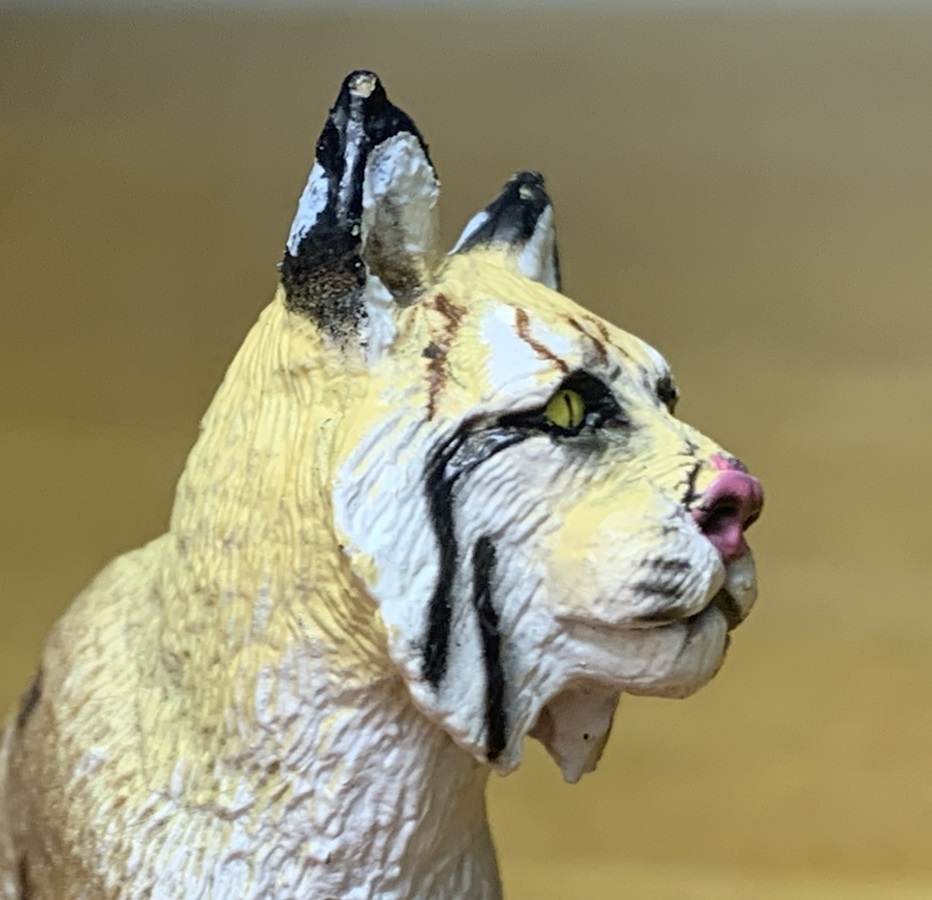
The Safari bobcat may be an older figure, but it is still going strong. It’s really the only figure of this species worth considering for a serious toy animal collection and essential to any collection of North American animals. That said, I’m curious to see what a new bobcat from Safari would look like and a bobcat by any other company would pique my interest too. The Safari bobcat is currently in production and retails for about $6.99.
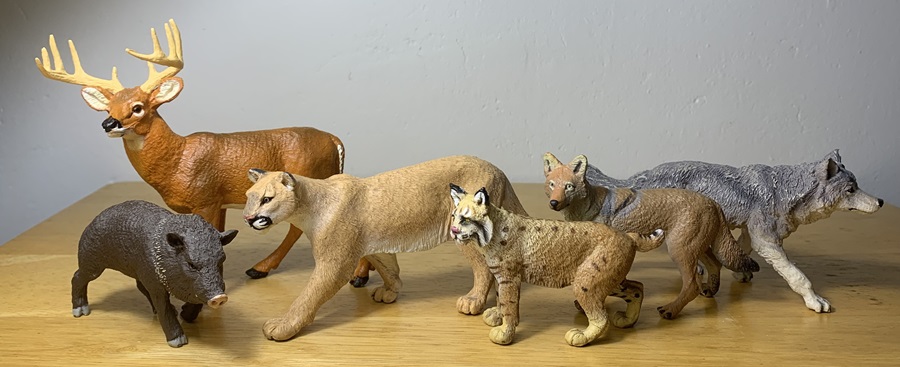
Disclaimer: links to Ebay and Amazon on the AnimalToyBlog are affiliate links, so we make a small commission if you use them. Thanks for supporting us!



